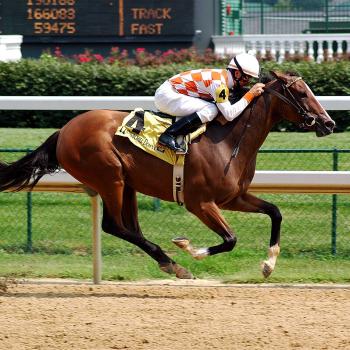(And the reality is that sports scholarships are distinct from most other types of scholarships: if you win a scholarship for outstanding volunteerism, you’re not required to continue volunteering to keep the scholarship, are you?)
At the same time, I find our system of “college ball = minor leagues” to be pretty lousy. Sure, it works well for players who want to get an education for free. But for players who just want to play football, they would be much better served by a true minor league system (with the financial counseling to understand that they’d better save their cash for after they can’t play any longer and need a new career). And it would save the schools from the corruption that goes along with running a big-time sports program, in which they enjoy substantial profits from students who aren’t even allowed any income other than their room and board allowance. (Or do they get some money for books and expenses? I don’t know, except that I read of such kids needing to go on food stamps in the summer because of summer job restrictions.)
Anyway, you read plenty often about kids who are in no way capable of serious college work being passed through Mickey-Mouse courses to preserve their academic eligibility, and who wouldn’t even have been admitted without loosening or eliminating the academic requirements that apply to everyone else. Profit-earning college athletics is corrupting; it’s very rare that an athletic program maintains the same standards for athletes as everyone else.
Heck, why not allow colleges to sponsor these minor-league teams, or affiliate with a minor league team? And if athletes want to take classes during the off-season, or during available time during the season, and are qualified, then good for them!
All of which is a long preface to an article that I stumbled on about college sports, and, specifically, women’s sports, “College Athletics and the Common Good.” It’s basic point is that, if athletics are a good means of bringing students together, developing teamwork and fitness, relieving stress, and promoting physical and mental well-being, then the university provides more benefits for more students by providing as many opportunities as possible for intramural and club sports of various forms. The author writes:
But if a college really believed in the camaraderie that sport helps to foster and the excitement of watching one’s friends struggle to win fair and square—if its administrators truly believed that such benefits should be extended to as many students as possible, regularly and in a wide variety of ways—then it could take a tiny portion of what is now spent on coaches, recruiters, physicians, staff, and travel, and devote it to promoting club sports and a robust program of intramurals.
A campus with 4,000 students, almost half of them male, could easily field several baseball teams, a football team, three-on-three basketball teams, teams for flag football and light-weight football, a wrestling team, clubs for women’s golf or tennis, women’s hockey or basketball, or whatever the students might wish. The beauty of club sports is that they are self-organized, local, and inexpensive. They involve all kinds of ordinary people. They are not serious, nor are they meant to be.
Now, his explanation of why universities don’t do this is that it’s a numbers game: such a university’s athletics program would likely find a disproportionate number of its participants to be male, and thus be in violation of Title 9 or, if not, at least politically incorrect, whereas, if your program consists of interescholastic competition with small numbers of athletes, you can make the numbers work by limiting the participants. That particular explanation doesn’t quite seem right — I would imagine it would be more likely to be a matter of universities seeking out the status that spending lots of cash on its top athletes provides — but all the same, it’s a worthy perspective, and not just at the college, but also the high school level.
And did I ever mention that I’m quite fond of the fact that, in Germany, athletics is completely divorced from schools, both at the secondary and university level, but occurs wholly through “clubs,” in which each town has its own “Turn und Sport Verein” (TSV) or “Gymanstics and Sports Association,” which provide any number of sports and recreational opportunities. Here’s a partial list at the TSV Gruenwald, where we lived during our stay in Germany: judo, karate, gymnastics, basketball, soccer, hockey, table tennis, volleyball, fencing. Now, some of this reads like our local Park District offerings, but the difference is that the TSV system is the only game in town — the top-tier soccer clubs are still clubs, and offer recreational sports as well. It’s not a perfect system, but has a fair amount of appeal.












